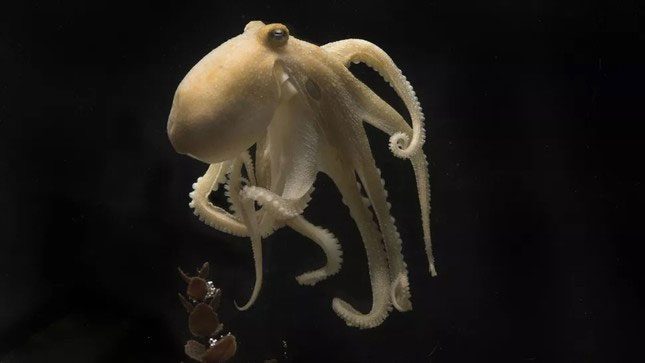Many animal species die after reproduction; however, mother octopuses consume their own eggs until the hatchlings are about to emerge, engaging in self-destructive behaviors such as smashing themselves against rocks, tearing their own skin, and even eating their own arms.
After an octopus lays eggs, it undergoes metabolic changes involving the production and utilization of cholesterol, which increases the production of steroid hormones—a significant biochemical alteration.

Mother octopus eating its own arm during childbirth.
Scientists have identified three distinct chemical changes that occur around the time mother octopuses lay eggs. The first is an increase in pregnenolone and progesterone, two hormones associated with reproduction across various organisms (in humans, progesterone levels rise during ovulation and early pregnancy).
Mother octopuses also begin to produce a higher concentration of cholesterol known as 7-dehydrocholesterol, or 7-DHC. Humans also produce 7-DHC during cholesterol synthesis, but they do not retain it in their bodies for long because it is a toxic compound.
In fact, infants with Smith-Lemli-Opitz syndrome, a genetic disorder, are unable to eliminate 7-DHC. As a result, they experience intellectual disabilities, behavioral issues including self-harm, and physical abnormalities such as extra fingers and toes, as well as cleft palate.
Finally, the optic glands also begin producing more components for bile acids, which are acids produced by the liver in humans and other animals. Octopuses do not possess the same type of bile acids as mammals, but they appear to create building blocks for those bile acids. It is possible that these bile acid components are crucial for regulating the lifespan of invertebrate species.
Z. Yan Wang, an assistant professor of psychology and biology at the University of Washington in the United States, stated that if the nerves leading to the optic glands are severed, mother octopuses will abandon their eggs, begin eating again, and live an additional 4 to 6 months. This represents an impressive extension of lifespan for creatures that typically live for about a year.


















































